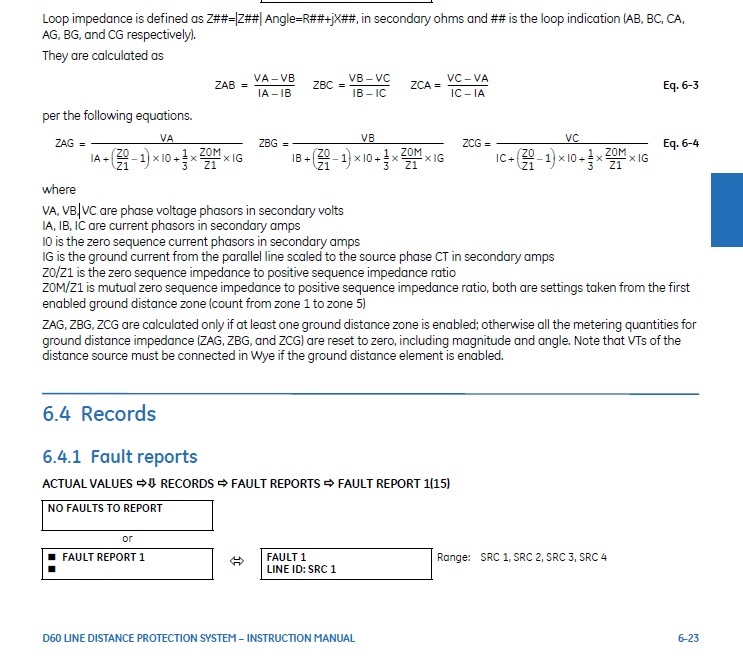Hello All,
This question is specific to setting the GE D60 line protection relay. I'm working with firmware v5.71 if that makes a difference...
I'm using CAPE to get my fault and apparent impedance values.
I am defining ZL0/ZL1 in my settings file. Both values are obtained from CAPE. My understanding is that this is being used by the relay to calculate K0 based upon my Zapp max from CAPE.
When I set my zone 1 ground reach, which I have defined as 0.75 * ZL1 (positive seq. impedance), I take the primary ZL1 value from CAPE, multiply it by my CT/PT ratio to get my secondary value, then multiply by 0.75 and enter this value (mag and angle) into the setting file.
Now, to my actual question:
When I am setting the Z2 ground reach setting, I am using the definition 1.25 * (ZMA SLG), where ZMA SLG is the maximum apparent impedance from CAPE for a single-line to ground fault at the remote end. When I use my ZMA SLG value from CAPE I should also use the CT/PT ratio to find my secondary value. !BUT! do I apply zero-sequence compensation to this value prior to entering it into the settings file? I know I've already defined ZO/Z1 in the settings file, which is used for the relay to do zero-sequence compensation, specifically when it is doing its angle compare functions on measured vs. memorized values. I'm unsure if I should be using a (K0) compensated value of the Zapp max SLG value, which CAPE can give me quite easily, or do I simply enter the Zapp max SLG (secondary) value and let the relay do the compensation on the reach value on its own.
In summary,
When setting Z2 ground reach setting for the D60 should I apply zero-sequence (K0) compensation to my reach values prior to entering into the settings file.
Thanks in advance!
marks1080
This question is specific to setting the GE D60 line protection relay. I'm working with firmware v5.71 if that makes a difference...
I'm using CAPE to get my fault and apparent impedance values.
I am defining ZL0/ZL1 in my settings file. Both values are obtained from CAPE. My understanding is that this is being used by the relay to calculate K0 based upon my Zapp max from CAPE.
When I set my zone 1 ground reach, which I have defined as 0.75 * ZL1 (positive seq. impedance), I take the primary ZL1 value from CAPE, multiply it by my CT/PT ratio to get my secondary value, then multiply by 0.75 and enter this value (mag and angle) into the setting file.
Now, to my actual question:
When I am setting the Z2 ground reach setting, I am using the definition 1.25 * (ZMA SLG), where ZMA SLG is the maximum apparent impedance from CAPE for a single-line to ground fault at the remote end. When I use my ZMA SLG value from CAPE I should also use the CT/PT ratio to find my secondary value. !BUT! do I apply zero-sequence compensation to this value prior to entering it into the settings file? I know I've already defined ZO/Z1 in the settings file, which is used for the relay to do zero-sequence compensation, specifically when it is doing its angle compare functions on measured vs. memorized values. I'm unsure if I should be using a (K0) compensated value of the Zapp max SLG value, which CAPE can give me quite easily, or do I simply enter the Zapp max SLG (secondary) value and let the relay do the compensation on the reach value on its own.
In summary,
When setting Z2 ground reach setting for the D60 should I apply zero-sequence (K0) compensation to my reach values prior to entering into the settings file.
Thanks in advance!
marks1080

